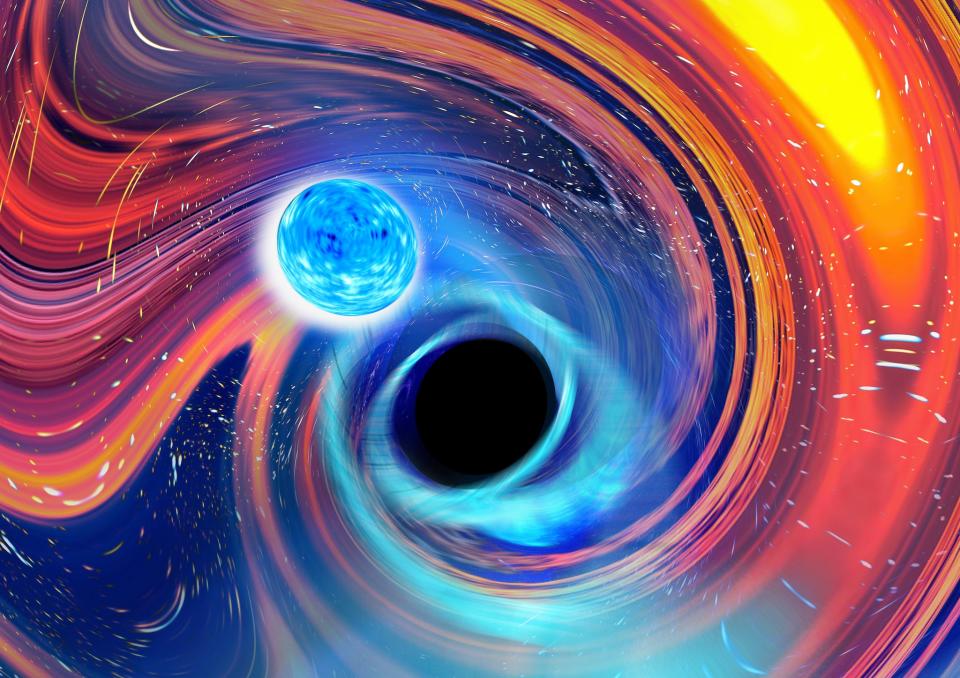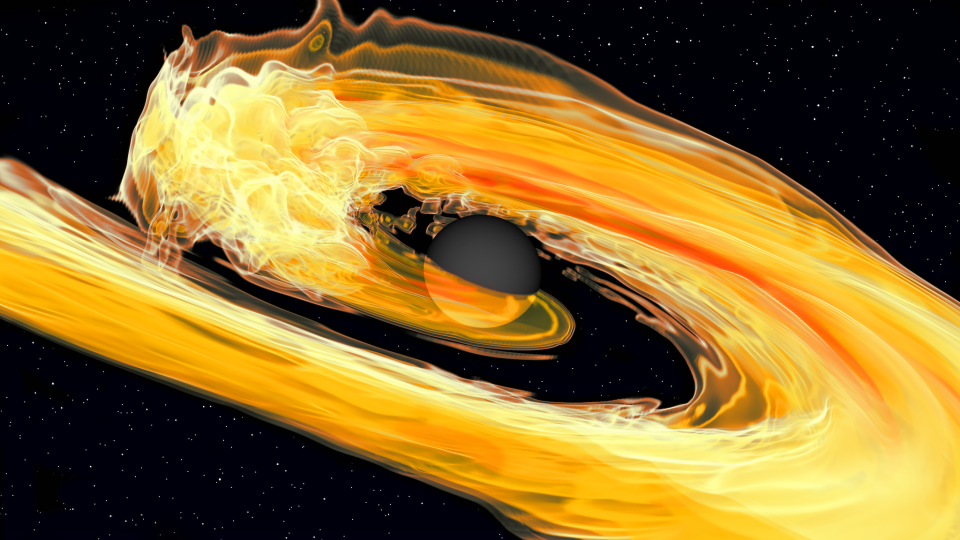Scientists see never-before-seen gravitational wave hit Earth after collision deep in space

Scientists have finally detected the collision of a neutron star with a black hole, in a major breakthrough in the use of gravitational waves.
The collision of the two black holes and their neutron star companions happened in two galaxies about 900 million light-years from Earth. The ripples in spacetime that the dramatic collision caused have been travelling through space ever since.
In January of last year, one hit Earth. Another passed through 10 days later.
The two sets of gravitational waves mark a major breakthrough in our understanding of the cosmos, and could finally shed light on the largely mysterious but dramatic processes that have shaped the universe.
Observations of the collision and the gravitational waves they sent rippling through the universe could unlock some of its deepest mysteries, including how matter is built and the very fundamental workings of space and time.
“These collisions have shaken the Universe to its core and we’ve detected the ripples they have sent hurtling through the cosmos,” said Susan Scott, a co-author on the new research, which is published in The Astrophysical Journal Letters.
“Each collision isn’t just the coming together of two massive and dense objects. It’s really like Pac-Man, with a black hole swallowing its companion neutron star whole.
“These are remarkable events and we have waited a very long time to witness them. So it’s incredible to finally capture them.”

Scientists have been looking for neutron stars orbiting around black holes in our galaxy for decades, but have come up with nothing. The new finding – from a black hole outside of our galaxy – means that scientists have finally found it.
“We can finally begin to understand how many of these systems exist, how often they merge, and why we have not yet seen examples in the Milky Way,” says Astrid Lamberts, a CNRS researcher at Observatoire de la Côte d’Azur, in Nice, France.
For years, gravitational waves were mostly theoretical, and nobody had ever directly observed one. But in 2016, scientists announced they had seen ripples in spacetime thrown out from the collision of a pair of black holes – and since then have been using them to peer at other phenomena throughout the cosmos.
Researchers have in the past used gravitational waves to detect collisions between pairs of black holes and neutron stars. But the new finding marks the first time that they have seen them colliding with each other, in a “mixed” merger.
It means that scientists can now finally put together the “missing piece of the family picture”, said Chase Kimball from Northwestern University, who was an author on the study. Scientists are now able to gather details of all three kinds of mergers, which in turn could reveal new insights into the universe.
The first of the two mergers was detected on 5 January last year, and involved a black hole about 9 times the mass of our Sun that collided with a neutron star just under double the mass of our star. The second arrived on 15 January and involved a black hole six times as massive as our Sun and a neutron star that was 1.5 solar masses.
As they came to Earth, they were detected by the Ligo and Virgo instruments, which are spread across Earth to watch out for gravitational waves. Because they are spread across Earth, the different observations can be used to try and approximate the waves’ origin, which hav ebeen pinned down to a part of the sky roughly the size of 3,000 full moons.
The fact that scientists were able to see the two events separately, scientists are able to estimate how often the collisions happen throughout the universe. Though not all of them will be able to be detected, researchers think there is about one such merger within one billion light-years of us each month.
Scientists still do not know how or where such binary systems are able to form. But the three likeliest stories suggest they come from binary sets of stars, dense environments that include young star clusters, adn the centre of galaxies.
They hope that further observations – which are being prepared for now, ahead of a planned launch in summer next year – will help answer those questions and more.
“We’ve now seen the first examples of black holes merging with neutron stars, so we know that they’re out there,” said Maya Fishbach, a Nasa Einstein Postdoctoral Fellow, part of the Ligo Scientific Collaboration, and a co-author on the paper.
“But there’s still so much we don’t know about neutron stars and black holes -- how small or big they can get, how fast they can spin, how they pair off into merger partners. With future gravitational wave data, we will have the statistics to answer these questions, and ultimately learn how the most extreme objects in our universe are made.”
Read More
John McAfee death conspiracy throws up final mystery in the wild life of a tech renegade
Bitcoin price – live: Crypto recovery ‘feels very 2013’, leading analyst says

 Yahoo Finance
Yahoo Finance 